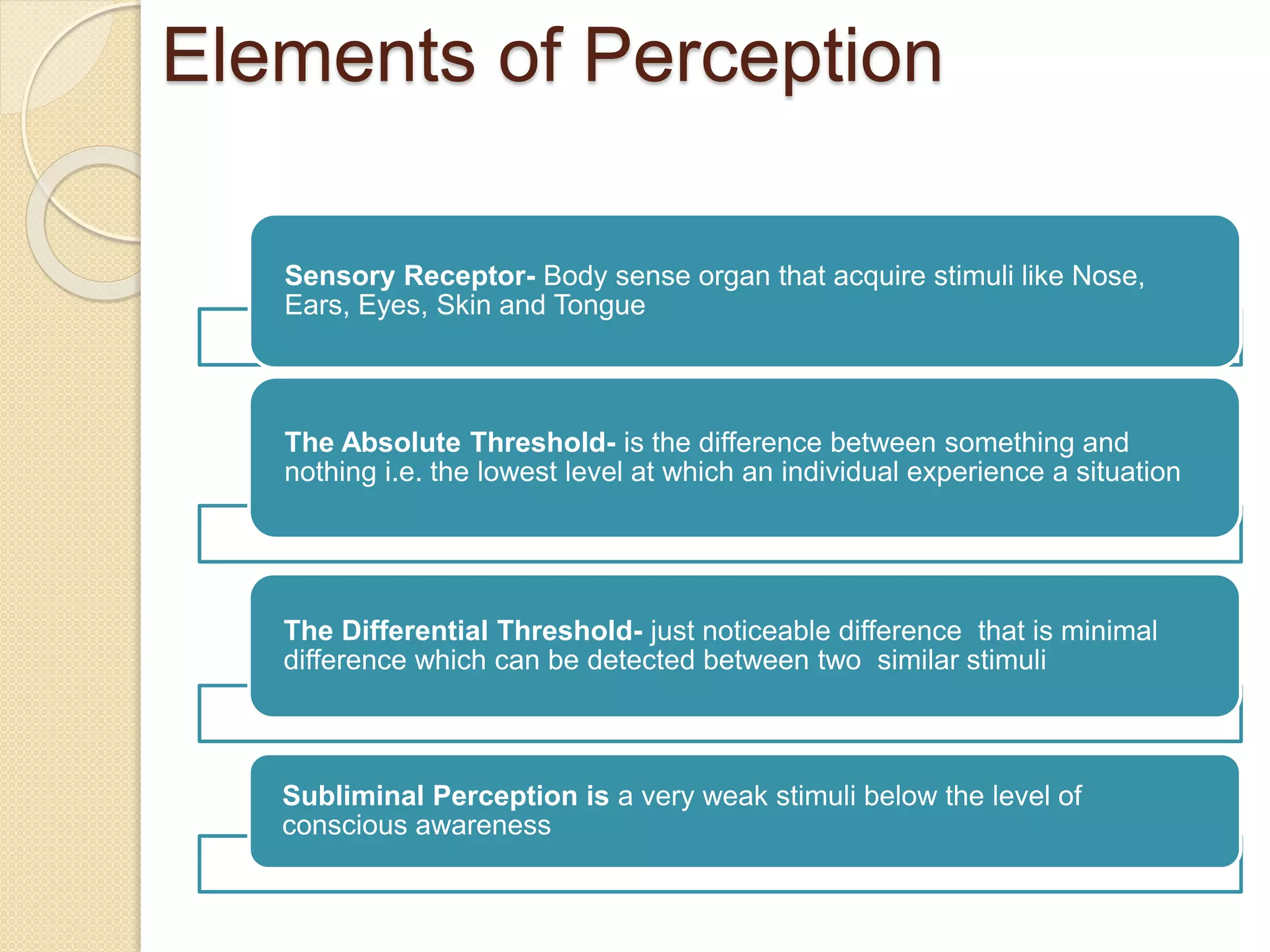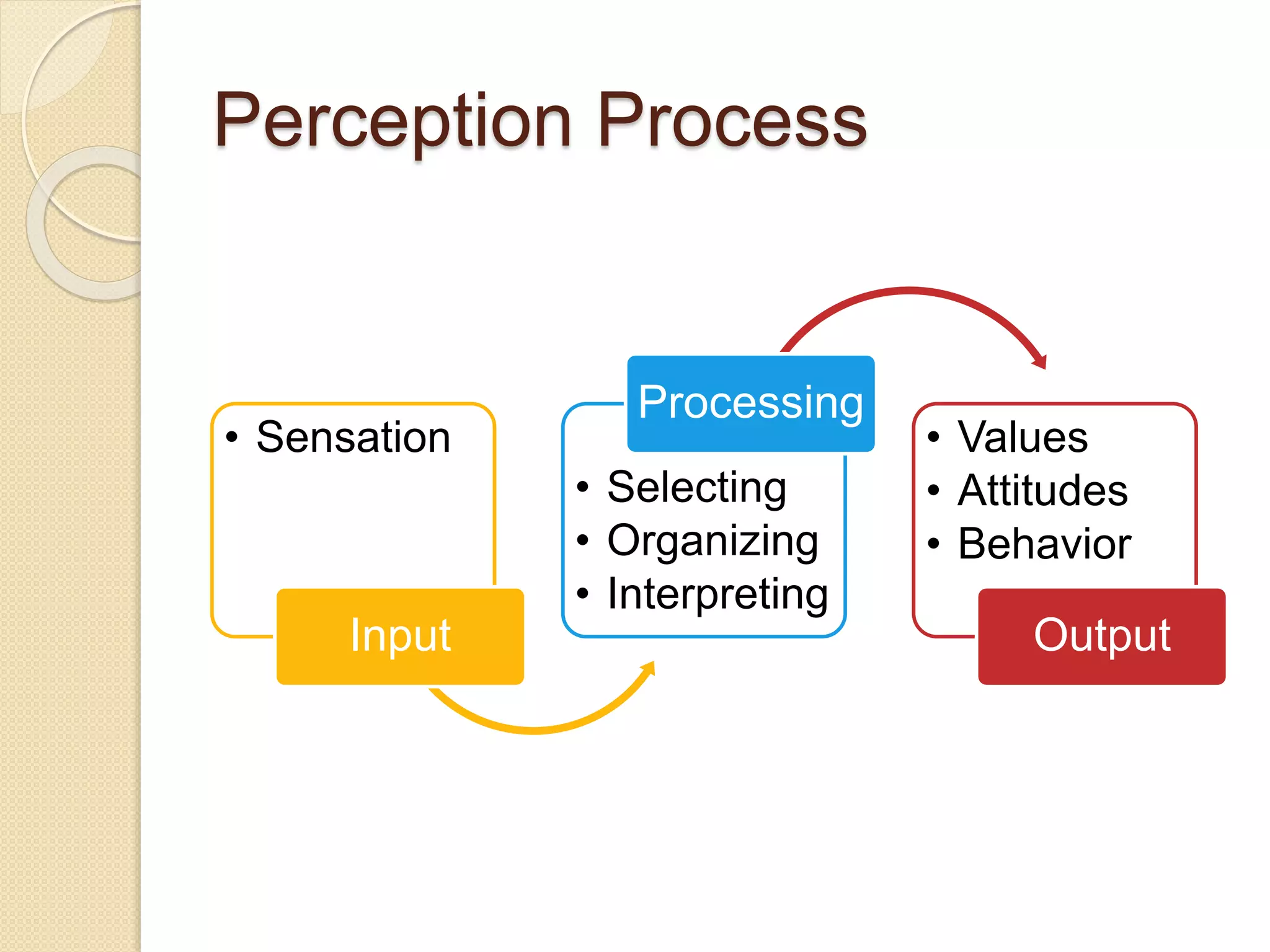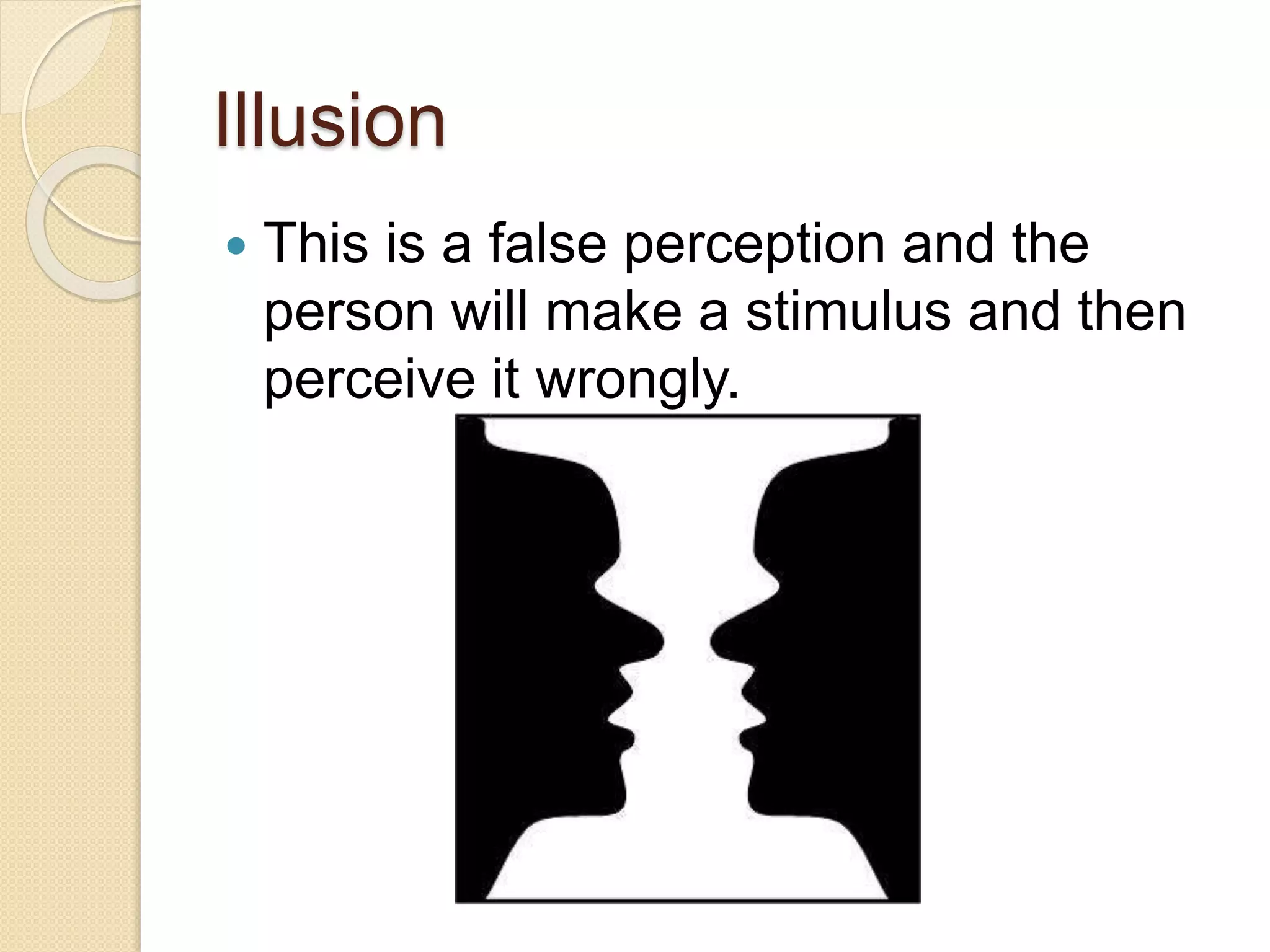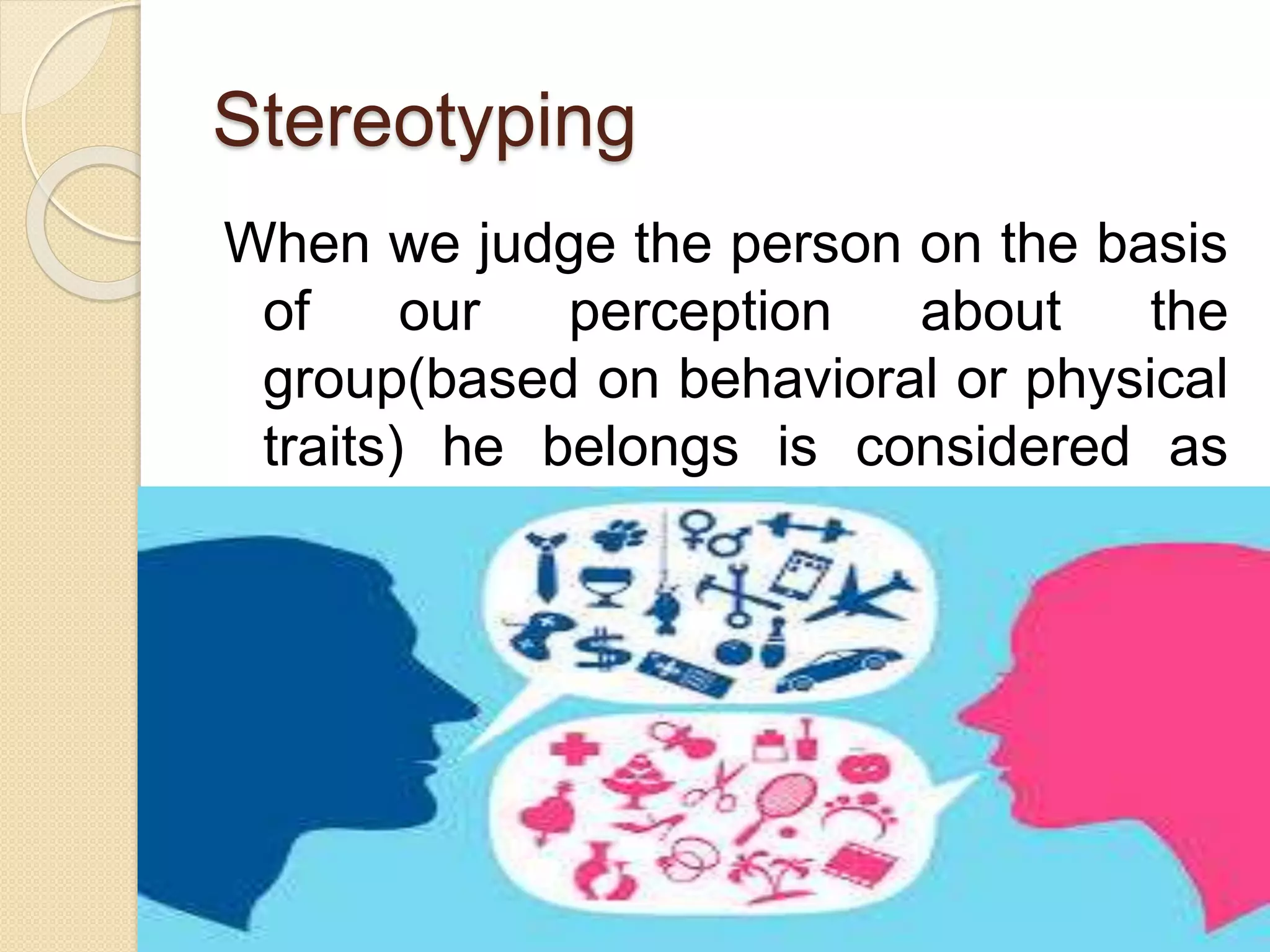The document explores perception, defining it as the process through which individuals organize and interpret sensory impressions. It highlights the nature, importance, elements, and processes involved in perception, as well as common perceptual errors. Additionally, it discusses the implications of perception in organizational settings and ways to improve perceptual skills.





















